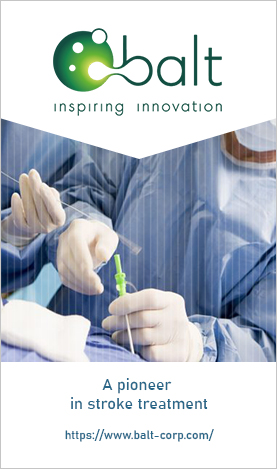Absence of Flair Hyperintense Vessel Sign in Internal Carotid Artery Occlusion
A case report and systematic literature review
DOI:
https://doi.org/10.32896/cvns.v7n2.25-37Keywords:
large vessel occlusion, Fluid-Attenuated Inversion Recovery, FLAIR Hyperintense Vessels SignAbstract
Large vessel occlusions (LVOs) are commonly associated with distinct pathognomonic radiological features, one of which is the fluid attenuation inversion recovery (FLAIR) hyperintense vessel sign (FHVS). This sign is indicative of an alteration in blood flow dynamics within the affected artery. In the majority of cases, the presence of arterial occlusion is accompanied by FHVS. However, there are exceptions wherein FHVS is absent despite the presence of an occlusion. This case report presents a patient with a complete right internal carotid artery (ICA) occlusion who exhibited relatively mild clinical deficits and limited infarction volume, alongside a notable absence of FHVS. This finding offers an opportunity to explore the pathophysiological mechanisms that might explain the absence of FHVS in such cases and its potential relationship with collateral circulation. The case report is followed by a systematic literature review that supports the phenomenon, that is, the absence of FHVS in cases of internal carotid artery occlusion.
References
Azizyan A, Sanossian N, Mogensen MA, Liebeskind DS. Fluid-attenuated inversion recovery vascular hyperintensities: An important imaging marker for cerebrovascular disease. American Journal of Neuroradiology 2011;32:1771–5. https://doi.org/10.3174/ajnr.A2265.
Salahuddin H, Saherwala A, Pinho MC, Moore W, Castonguay A, Khan NI, et al. Association of distal hyperintense vessel sign and recurrent stroke in patients with symptomatic intracranial stenosis. Journal of Stroke and Cerebrovascular Diseases 2022;31. https://doi.org/10.1016/j.jstrokecerebrovasdis.2022.106616.
Kashiwazaki D, Yamamoto S, Akioka N, Hori E, Shibata T, Kuwayama N, et al. High-intensity vessel sign on fluid-attenuated inversion recovery imaging: a novel imaging marker of high-risk carotid stenosis-a MRI and SPECT study n.d. https://doi.org/10.1007/s00701-020-04408-4/Published.
Lyu J, Hu J, Wang X, Bian X, Wei M, Wang L, et al. Association of fluid-attenuated inversion recovery vascular hyperintensity with ischaemic events in internal carotid artery or middle cerebral artery occlusion. Stroke Vasc Neurol 2023;8:69–76. https://doi.org/10.1136/svn-2022-001589.
Yao A, Wang B, Jia L. Asymptomatic severe occlusion of the internal carotid artery (ICA) in a Chinese patient with multiple cerebrovascular and cardiac stenoses. Interdiscip Neurosurg 2017;9:80–1. https://doi.org/10.1016/j.inat.2017.04.001.
Kikumoto M, Aoki S, Shiga Y, Kinoshita N, Nezu T, Ueno H, et al. Giant cell arteritis with internal carotid artery occlusion in the absence of typical clinical features. Internal Medicine 2021;60:1293–7. https://doi.org/10.2169/internalmedicine.5592-20.
Mahfar N, S. S. Dhillon, A. Tharek, A. Azizan, M.I.A Sabri, I.S.A Bakar, F.F. Khairudin, A.S. Muda; Predictive Value of FLAIR Hyperintense Vessels Sign for Large Vessel Occlusion in Hyperacute
Nam KW, Kwon HM, Park SW, Lim JS, Han MK, Lee YS. Distal hyperintense vessel sign is associated with neurological deterioration in acute ischaemic stroke. Eur J Neurol 2017;24:617–23. https://doi.org/10.1111/ene.13259.
Maguida G, Shuaib A. Collateral Circulation in Ischemic Stroke: An Updated Review. J Stroke 2023;25:179–98. https://doi.org/10.5853/jos.2022.02936.
Kimmel ER, Al Kasab S, Harvey JB, Bathla G, Ortega-Gutierrez S, Toth G, et al. Absence of Collaterals is Associated with Larger Infarct Volume and Worse Outcome in Patients with Large Vessel Occlusion and Mild Symptoms. Journal of Stroke and Cerebrovascular Diseases 2019;28:1987–92. https://doi.org/10.1016/j.jstrokecerebrovasdis.2019.03.032.
Connolly F, Röhl JE, Lopez-Prieto J, Danyel LA, Schreiber SJ, Valdueza JM. Pattern of Activated Pathways and Quality of Collateral Status in Patients with Symptomatic Internal Carotid Artery Occlusion. Cerebrovascular Diseases 2020;48:244–50. https://doi.org/10.1159/000504663.
Published
How to Cite
Issue
Section
License

This work is licensed under a Creative Commons Attribution-ShareAlike 4.0 International License.






